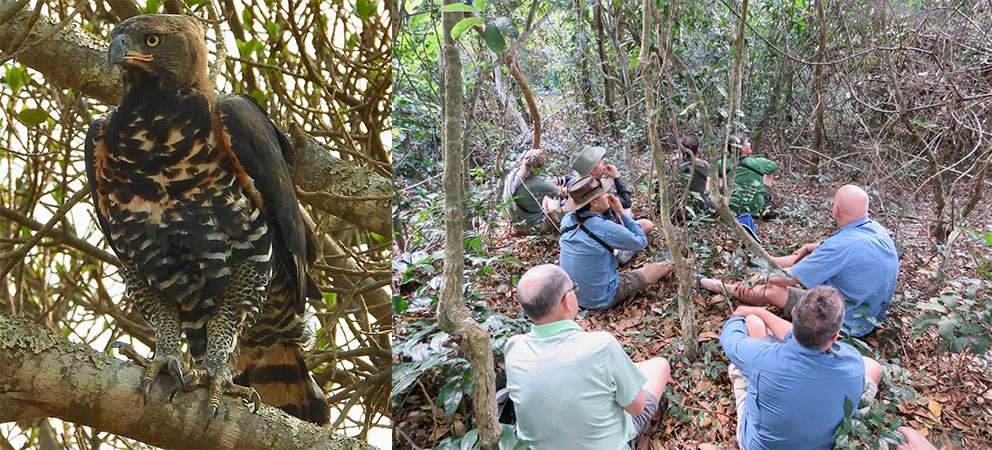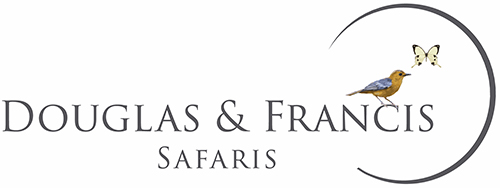9 DAY BIRD SAFARI
MOZAMBIQUE
9 DAYS 8 NIGHTS
4-8 PAX
Your arrival time is at 12 40 in to Beira. We will pick you up and take you to your accommodation Jardim das Velas/similar abode on the beachfront.
The afternoon will take us to Rio Maria, which is a wader hotspot! It is a great location for the Lesser Sand Plover, Greater Sand Plover, and Lesser Crested Tern whilst the most highly sought after Crab Plover has been seen here before. The stunted mangrove forests fringing the river are home to the charismatic Mangrove Kingfisher.
Beira boasts some of the most fantastic grasslands, wetlands and lowland forests; we will start the morning off in the Nhangaan forest looking for East Coast Akalat, Woodwards Batis and Black-headed Apalis. A pair of Southern Banded Snake Eagle has adopted this little patch of forest as their breeding ground, which is an added bonus. There are many species of Anurans (frogs) found in this forest, which are endemic to the coastal plains, and forests of Beira – we will be on the look out?

The coastal plains surrounding the forest are an excellent place to look for the Eurasian Bittern, Malagasy Pond Heron and Blue Quail – the later a very rare and nomadic species which can be common in certain years. It is a brilliant time of the year for the winter migrants from Madagascar and it has been an exceptional year (rainfall) so a greater chance for the Pond Heron and Mascarene Martin?
We will continue to Rio Savane from Beira through the Nhangaan forest. There are excellent wetlands, which are home to the Great Snipe, Locust Finch, Blue Quail, Short tailed Pipit, Black-rumped Button Quail and Eurasian Bittern. The wetland comprises of flooded short grass plains, which we walk through in hope of flushing the above-mentioned species. Massive mature mangrove forests surround the Savane River, which is an excellent place for the Mangrove Kingfisher. When the tide is out the mudflats are packed with many species of waders the most common one being the Terek Sandpipers who are forever running down their favorite prey – little fiddler crabs. It is also a great place for the Greater Sand Plover giving us a second chance after Rio Maria. Lesser Crested Terns patrol the mouth of the river showing off their orange bills and light colored mantles and backs.
We will sleep in Beira at Jardem das Velas/similar abode.
We leave very early in the am to Catapu, around 250 Km away.
The trip to Catapu takes us around the Gorongoza Mountain to the lowlands of the Zambezi and its incredible forests! A brief stop at the Nhamaphazza River and a quick search in the riverine forests for the Black-and-White Flycatcher is crucial; they are a very territorial species and viciously guard their territories against any rivals. A pair has lived at the river for years.

As we nearer Catapu the forests become very thick and perfect for all the Mozambique lowland specials. Brief stops in these terrific forests should reveal Plain-backed Sunbirds, Black-headed Apalis and Grey-headed Parrots. The forests are scattered with Africas most charismatic tree – the African Baobab which is home of the Mottled Spinetail.
We will go to the forests in the pm to get some of the specials of the Sandveld Forests.

Catapu is located in the heart of these lowland forests and is an excellent spot to base us out of. Birds found at the camp and its surrounds are Southern Banded Snake Eagle, Chestnut-Fronted Helmet-Shrike, Plain-backed Sunbird, Livingstone’s Flycatcher, Black-and-White Flycatcher and Tiny Greenbul.
The forests are massive and day trips into the Coutadas and Inhamtanga will be done daily. There we will locate all the Mozambique specials but the two gems are without a doubt the White-chested Alethe and the East-coast Akalat. It is a great area for the Mascarene Martin and Madagascar Cuckoo – the first found floating over and through the forest, the later seated in dead trees above the forest.
A single bird party located can add a whopping 10 species to the lists immediately!
Agitated alarm calls of Mutable Sun Squirrels are the best ways of locating bird parties so we will be listening out for them very carefully!
Strangely there are pockets of Miombo woodland scattered about the forests and they are a great place to find Western Violet-backed Sunbirds as well as Red-winged Warblers and Moustached Grass-warblers. The reason being Miombo woodland under story is not thick with vegetation for there is good light penetration enabling grass and reeds to flourish. Any bird party found in the Miombo patches will be scrutinized thoroughly for it is the area of the Yellow-bellied Hyliota a scarce resident!
There are many species of mammal found in the forests but one in particular is very rare – the Mozambique Galago or Grant’s Bushbaby (the same animal). About a dozen people have ever seen this weird and wonderful Prosimian (old world primate) and we have an excellent locality for it.
We depart from Catapu for Beira where we stay the night at Jardim das Velas. This will be a return trip past Gorongoza again and we will have a second chance at spots we had traversed earlier.
We will bird/relax in the morning before your flight at 13 00h on SA 8215.




